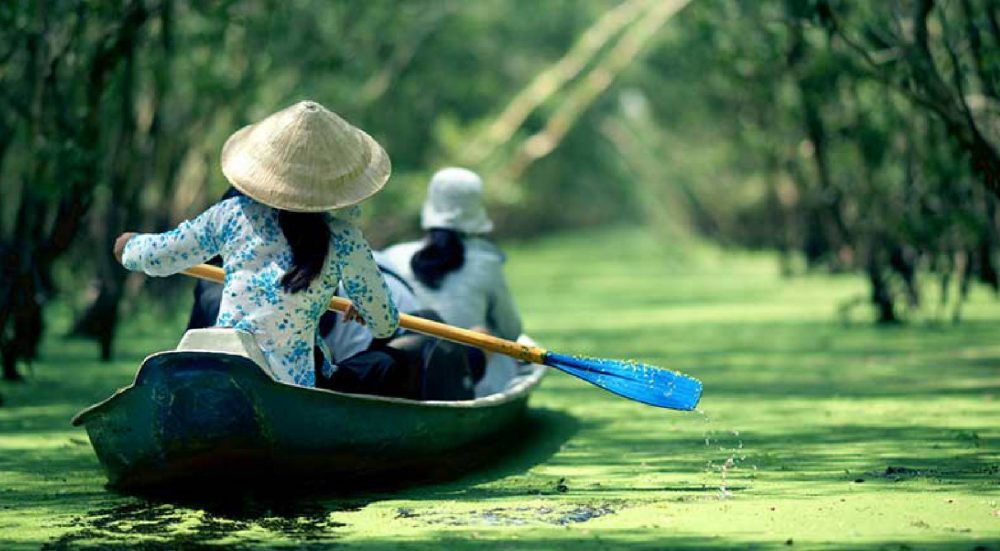A boat trip through the long green Persian carpet – Tra Su Cajuput Forest
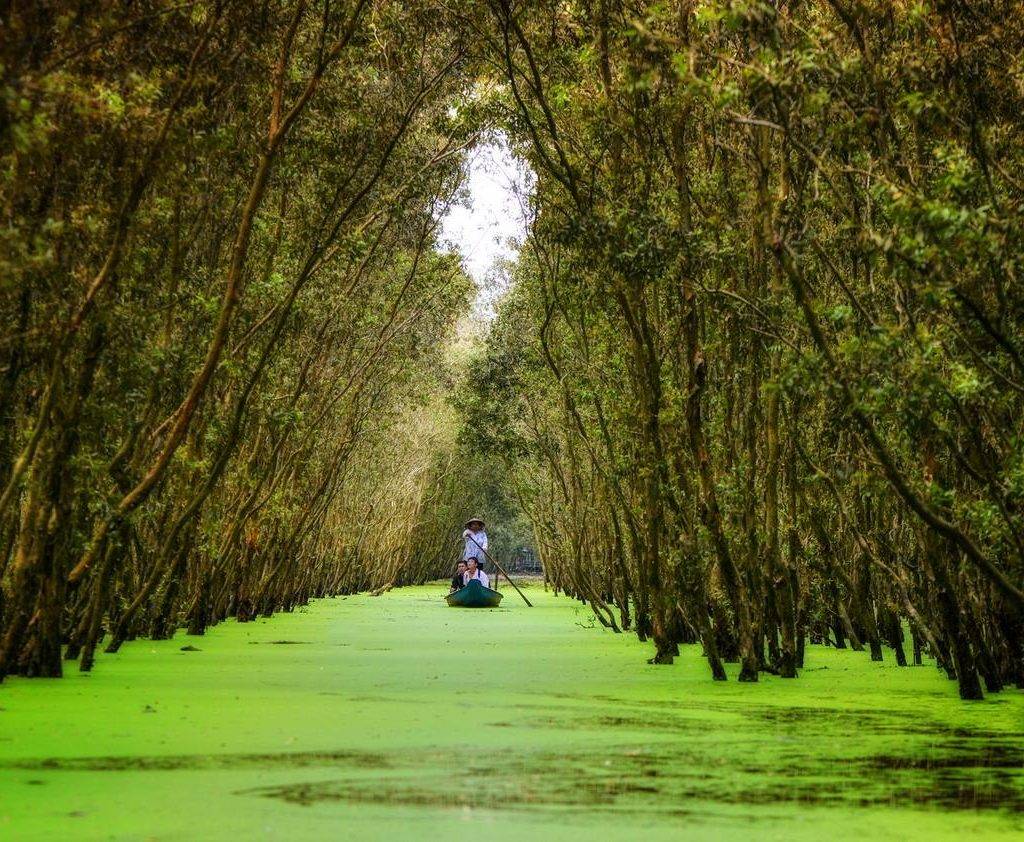
Unique natural resources combined with indigenous river cultures have brought An Giang numerous attractive tourist spots, one of which is Tra Su Cajuput forest – an idyllic place for wildlife enthusiasts.
1. What’s interesting about Tra Su Cajuput Forest?
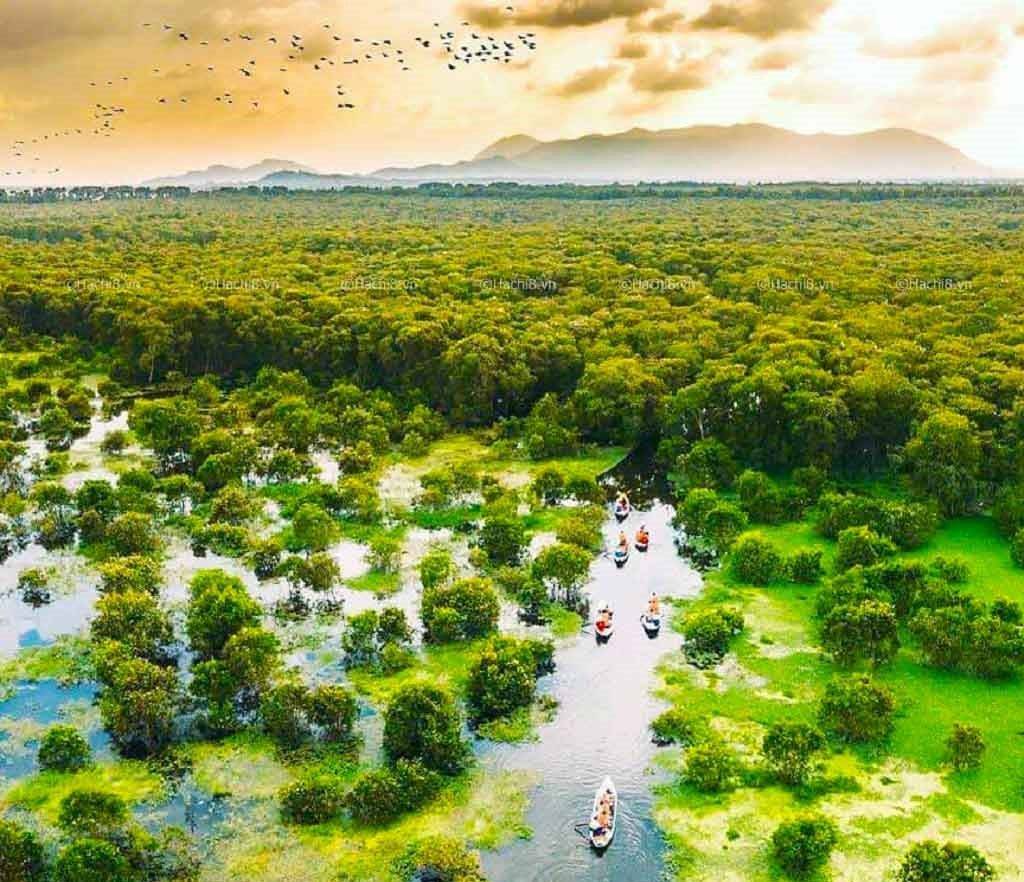
Located in the peaceful countryside at Van Giao Commune, Tinh Bien District – about 20 km from Chau Doc Town, Tra Su Cajuput forest features a diverse ecological system, including countless species of birds, reptiles, fish, and plants. Some are rare and endangered.
The forest is currently home to more than 70 species of animals, in which, Giang Sen and Dien Dien are listed in the Red Book of Vietnam. In addition, the typical species that tourists can easily see are white storks and Indian pheasants.
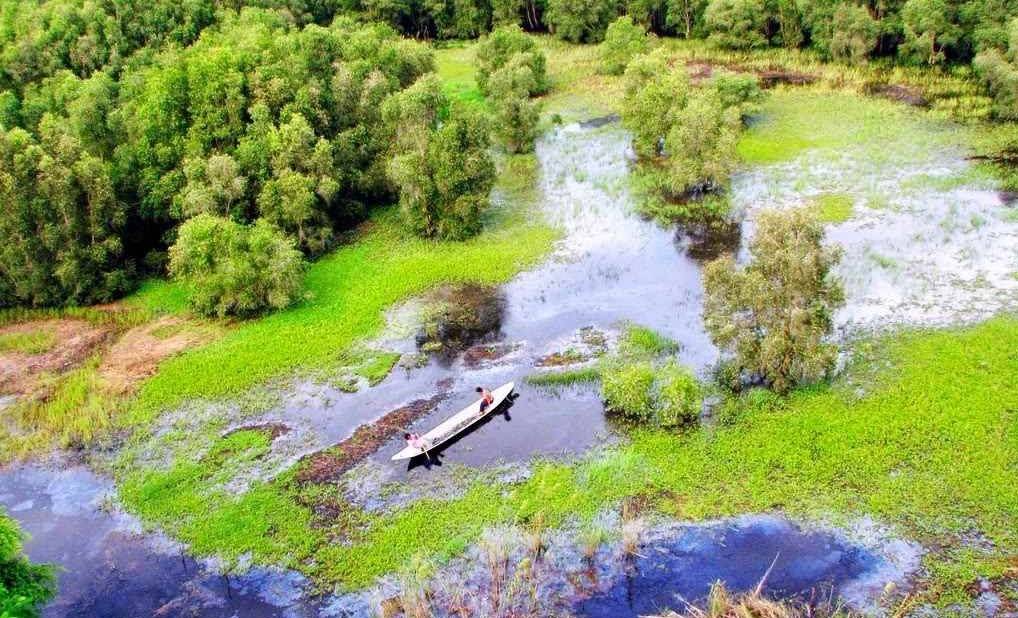
In terms of flora, more than 140 species belonging to shrubs, cajuput (dominant), vines, grass, habitat, medical plants, and ornamental plants are available here. Some of them, like the fern, are also the daily vegetables of local people.
During the flood season, the whole area is covered with immense duckweed and other emerald-green plants.
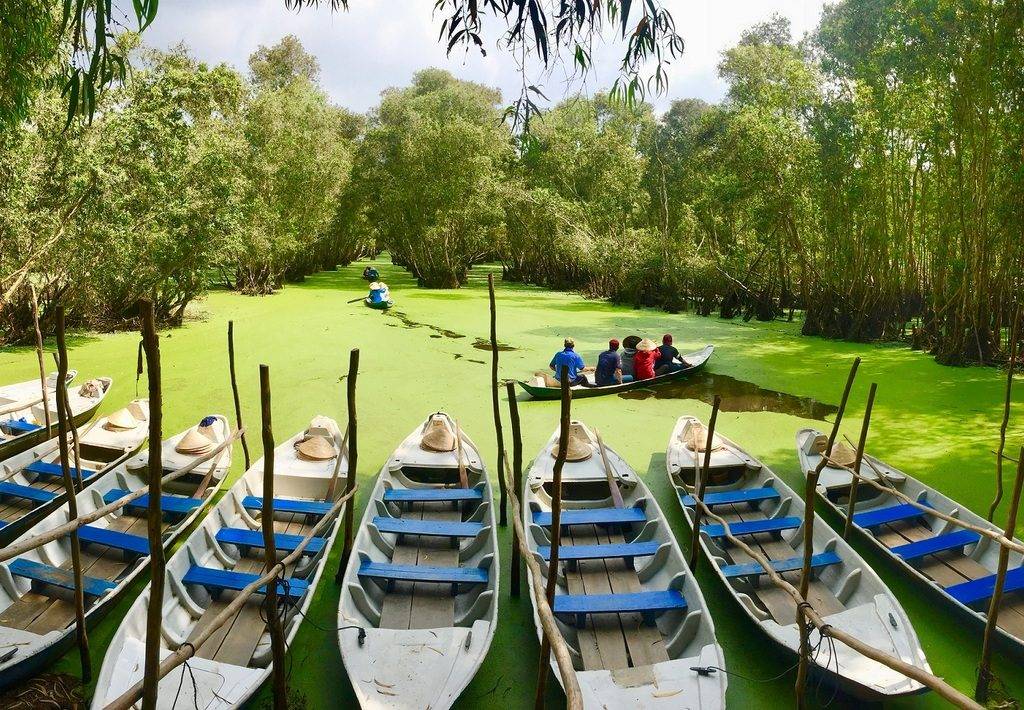
The ticket price for solo travelers will be 130,000 VND, however, the larger the group, the lower the fee per person; for example, the ticket price is only 45,000 VND/person for a group of 10. So, if you go alone or with a few people, you can offer to buy tickets with other tourists to get better costs.
Read more: An Giang – The highlights of water lifestyle in Mekong Delta
2. Why should we visit Tra Su Cajuput Forest in the floating season?
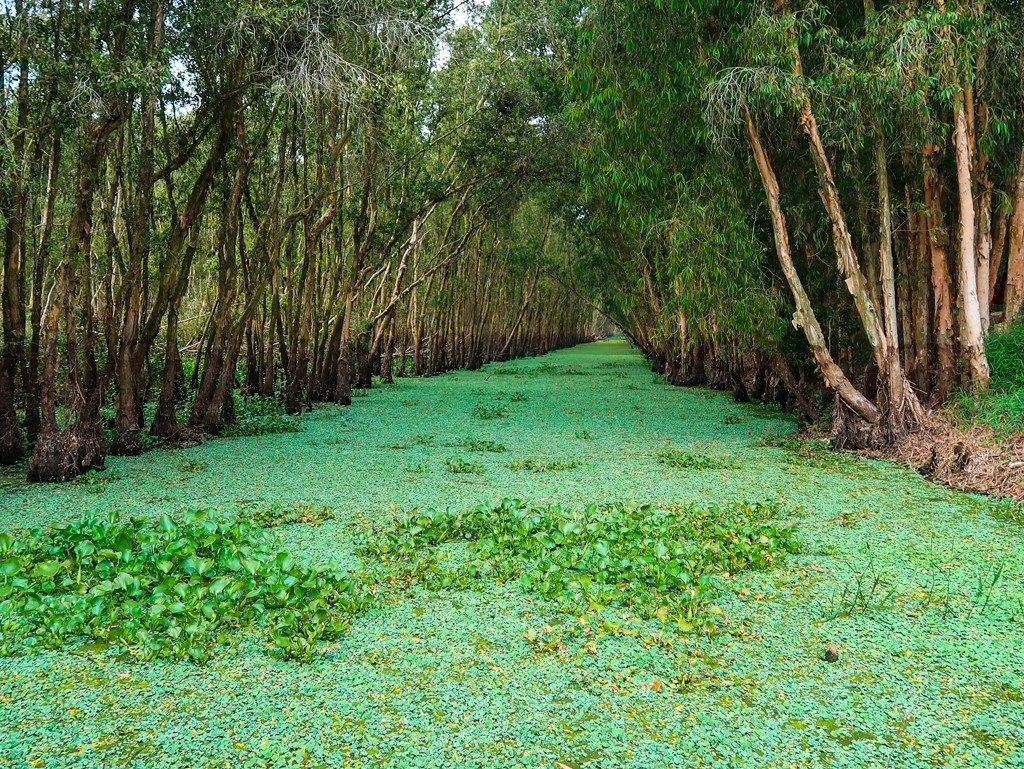
The floating season, or exactly the flood period on the Mekong River, causes a natural surge in water levels in the Mekong Delta provinces, usually starting from July to the end of October of the lunar calendar.
During this time, all plant and animal species reproduce and develop prosperously. As a low-lying area, this is an ideal place for fish species to breed, especially Siamese mud carp (ca linh).
There are two ways to visit Tra Su Cajuput Forest; traveling by boat or walking on the 4-kilometer bamboo bridge through the forest. A boat tour will have two stages, taking around 2 hours.
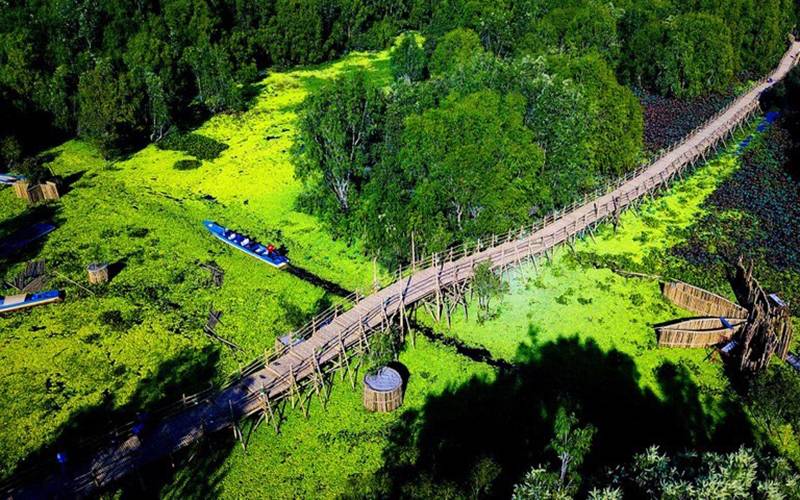
At the first stage, visitors will be taken into the heart of the forest by a motorboat carrying 10 guests at a time. This area is sparse, not really appealing in general.
Read more: Explore Thung Nham – The land of birds
The deeper you go, the quieter the space is and the narrower the road is; therefore, visitors have to stop at a station to transfer to smaller wooden boats with manual rowers. According to them, when the flood season comes, the water level can reach up to 3 meters high, making it easier to move.
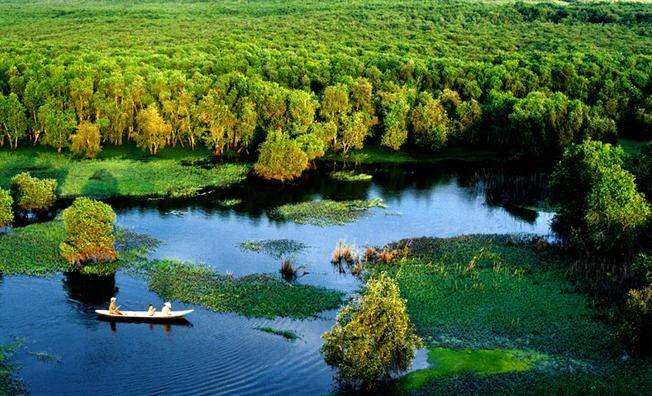
At the last section of the tour, the wooden boat will take you to a dirt road to cross a small wooden bridge to reach the 14-meter-high Vong Gac tower and souvenir stalls.
From here, tourists will be able to see Sam Mountain, Cam Mountain, Seven Mountains cluster, and villages of Khmer people in distance. To have better observation, you can use the large binoculars for 5,000 VND/person.
The only downside about Tra Su Cajuput Forest is that since the transformation, the place has become more like a theme park than a natural reservation. Along with the noisy motorboats, these problems somehow affect the lives of animals here.
Read more: THE LANDSCAPE OF VIETNAM FROM ABOVE
